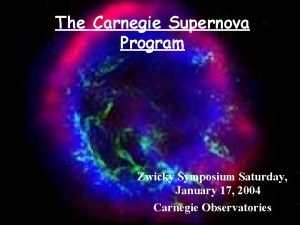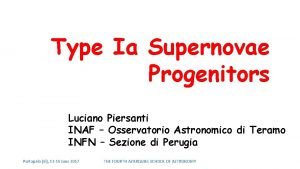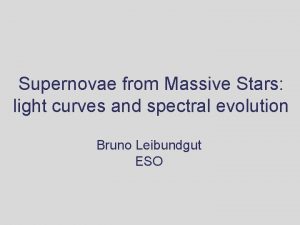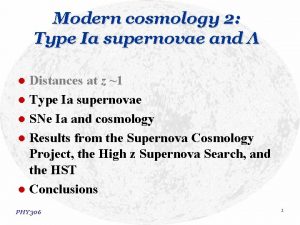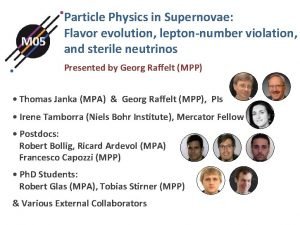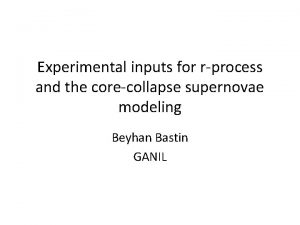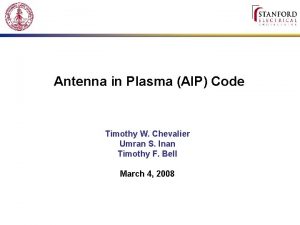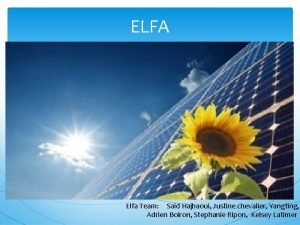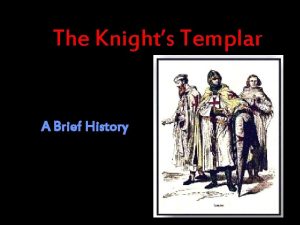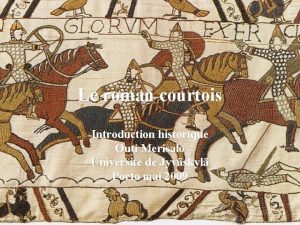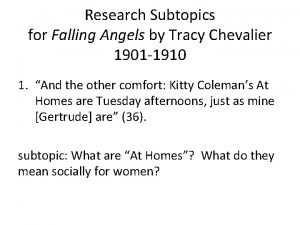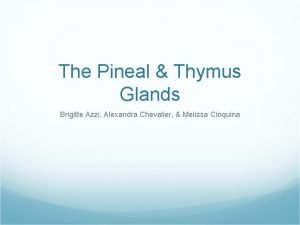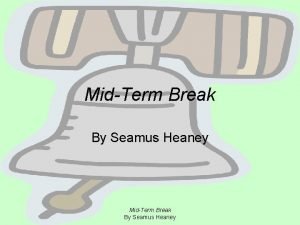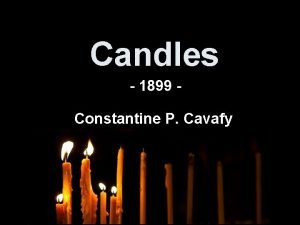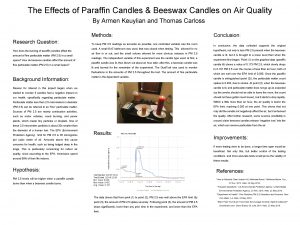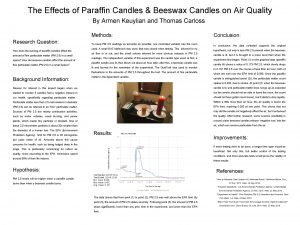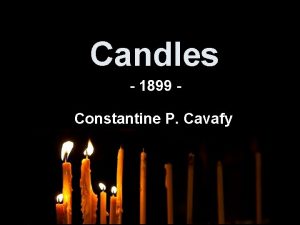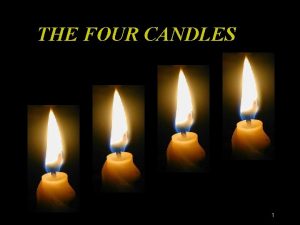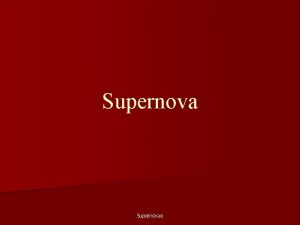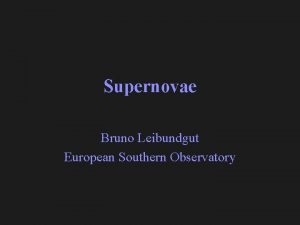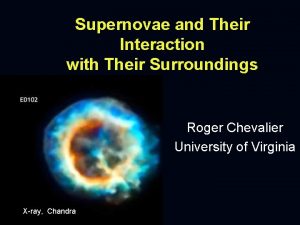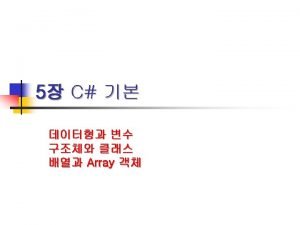Type Ia Supernovae standard candles Roger Chevalier Supernovae


























- Slides: 26

Type Ia Supernovae: standard candles? Roger Chevalier

Supernovae – spectroscopic classification n n Filippenko 97 Type I – H absent Type II – H present

Light curves Filippenko 97

Late spectra Filippenko 97

Why SN Ia for cosmology? Luminous n Can occur in older stellar population; not closely tied to star forming regions n Uniform in properties n e. g. , Colgate 79

Basic interpretation (c. 1980) Thermonuclear explosion of Chandrasekhar mass (1. 4 M ) white dwarf n Not a complete detonation n No compact remnant n The white dwarf accretes in a binary system n The burning produces ~0. 6 M of 56 Ni, the decay of which powers the light curve n

n n n Nuclear fusion gives ~1051 ergs Adiabatic expansion in going from 109 cm to 1015 cm Power for radiation (~1049 ergs) provided by radioactivity

Chevalier 81

Chevalier 81

Woosley & Weaver 86


Late spectrum

Phillip’s relation (1993)

Filippenko 97 Hamuy et al. 96

n Hamuy et al. 96 Application of the Phillip’s relation

Light Curve Shape method Reiss, Press, Kirshner 96

n SCP (Supernova Cosmology Project) S. Perlmutter et al. n Used Phillip’s relation and light curve “stretch” n n HZT (Hi – z Supernova Search Team) B. Schmidt et al. n Used LCS method n

Riess et al. 2004 n SN Ia Discoveries at z>1 from the HST

Spectra n n SN type Redshift z Riess et al.

Riess et al.

Riess et al.

Riess et al.

Evolution leading to SN Ia n Single degenerate in binary (standard model) Low accretion of H – explodes and blown off n d. M/dt>10 -7 M /yr, stable accretion n d. M/dt>3 x 10 -7 M /yr, build up envelope → spiral-in? n “Hachisu” wind? n n Double degenerate Gravitational radiation drives binary evolution n But, unstable mass transfer → burning to ONe WD → accretion induced collapse n

Explosion physics n 1 -dimensional (spherical) models n n Deflagration DD – delayed detonation PDD – pulsating delayed detonation 3 -dimensional models n Importance of Rayleigh-Taylor instability Ropke & Hillebrandt 05

Explaining the Phillips’ relation n n Travaglio et al. 05 Metallicity – more CNO → more 22 Ne → less 56 Ni Central density at time of ignition

Conclusions We do not understand evolution leading to explosion, explosion mechanism, Phillips’ relation… n But, there are no indications that the highz SNe Ia are different from nearby ones n
 Type ia supernovae
Type ia supernovae Supernovae
Supernovae Supernovae
Supernovae Supernovae
Supernovae Supernovae
Supernovae Supernovae
Supernovae Demolay merit bars
Demolay merit bars Aipcode
Aipcode Dr dominique chevalier
Dr dominique chevalier Justine chevalier
Justine chevalier Le chevalier de baphomet
Le chevalier de baphomet Romane courtois
Romane courtois Falling angels tracy chevalier
Falling angels tracy chevalier Alexandra chevalier
Alexandra chevalier Four candle
Four candle The knelling bells summoned
The knelling bells summoned Waxman candles
Waxman candles Light the candles all around the world
Light the candles all around the world Country scents candles
Country scents candles Nissim ezekiel night of the scorpion poem
Nissim ezekiel night of the scorpion poem Barry lights his candles to get his hot air balloon to fly.
Barry lights his candles to get his hot air balloon to fly. Cavafy candles
Cavafy candles Listen and draw the candles
Listen and draw the candles Critical density
Critical density The four candles prayer
The four candles prayer Jell candles
Jell candles Innocent candles
Innocent candles
